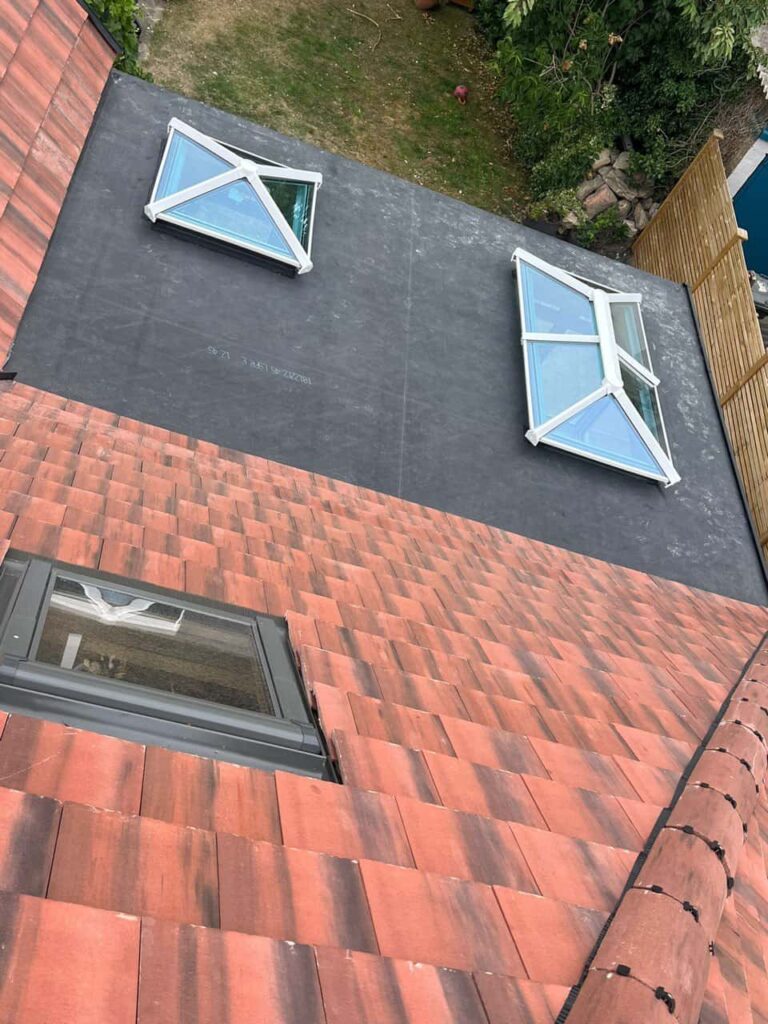Introduction
When replacing your roof, it’s easy to focus solely on the new tiles or slates. But there’s a less visible element that’s just as important—flashing. This thin material, typically found around chimneys, roof valleys, and junctions, plays a vital role in keeping water out. Overlooking it during a roof replacement can create vulnerabilities that undermine the rest of the work.
At Aldridge Roofing Repairs, we often advise homeowners in Aldridge and the West Midlands on whether their flashing should be replaced alongside the roof. In this article, we explain why flashing matters and when it should be replaced to get the best results from your new roof.
Key Takeaways
- Flashing seals joints and roof penetrations, preventing leaks.
- Old or worn flashing can compromise the integrity of a new roof.
- Replacing flashing during a roof replacement is more efficient and cost-effective.
- Aldridge Roofing Repairs ensures flashing is assessed and replaced where necessary.
What Flashing Does and Why It’s Important
Flashing is used to waterproof the vulnerable joints on your roof—particularly where the roof meets vertical structures like chimneys, skylights, or dormers. Without effective flashing, these intersections are highly prone to leaks.
Over time, flashing can corrode, lift, or crack due to weather exposure, movement in the structure, or natural ageing. A roof replacement is the ideal time to inspect and, if needed, upgrade these essential components.
When You Should Replace Flashing
Most roofing professionals agree: in the majority of cases, flashing should be replaced when the roof is. Here’s why:
- Improved performance: New flashing ensures a proper seal with your new roofing materials.
- Prevents future issues: Old flashing may look intact but can fail shortly after a new roof is installed.
- Saves money long-term: Replacing flashing now avoids the labour and costs of fixing issues down the line.
Can Flashing Be Reused?
In rare cases, flashing in excellent condition can be left in place—but only after a thorough inspection. This usually applies to newer properties or previous repairs done to a high standard.
However, reusing flashing often leads to mismatched finishes, poor sealing, and greater risk of water ingress. For peace of mind, most professionals recommend replacing it as part of a full re-roof.
Common Signs Flashing Needs Replacing
- Visible rust or corrosion
- Cracks, gaps, or lifting edges
- Water stains on ceilings or in the loft
- Flashing no longer sits flush after tile removal
What We Do at Aldridge Roofing Repairs
When we replace a roof, we treat flashing as a core component—not an afterthought. Our team will assess the condition of your current flashing and provide clear guidance. If it’s compromised or incompatible with the new roof system, we’ll replace it using long-lasting, weather-resistant materials suited to your property.
Conclusion
Flashing is one of the most critical components of a reliable roof. Replacing it during a roof replacement ensures a cohesive, weather-tight finish and avoids unexpected leaks later on. It’s a small investment with big returns.
At Aldridge Roofing Repairs, we provide complete roofing solutions, including flashing replacement, to homeowners across the West Midlands. If you’re planning a roof replacement, contact us today for honest advice and high-quality workmanship that stands the test of time.
Call us on: 01922 661 597
Click here to find out more about Aldridge Roofing Repairs
Click here to complete our contact form and see how we can help with your roofing needs.

